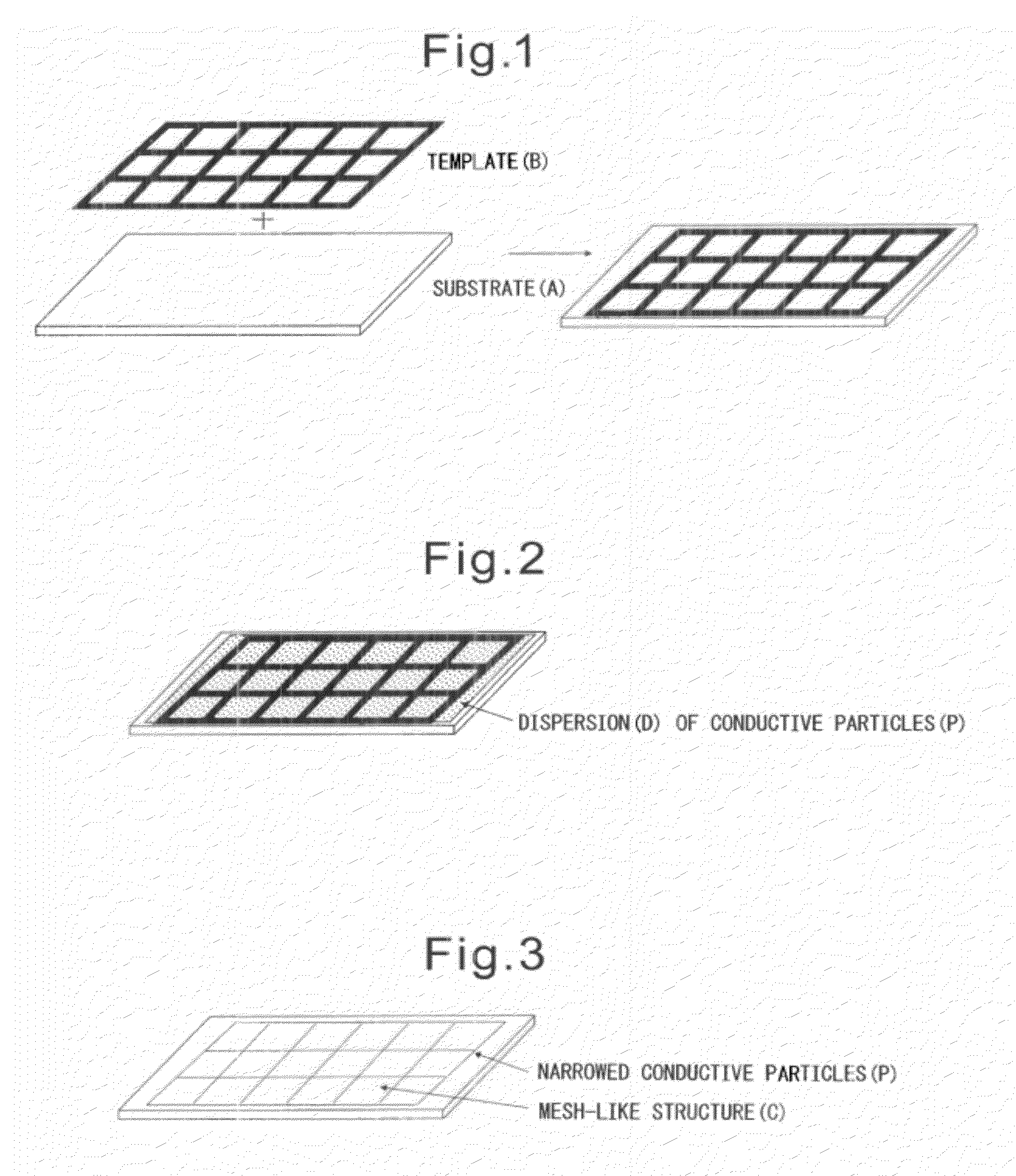Conductive film and method for its production
a technology of conductive film and conductive layer, which is applied in the direction of conductive layer on the insulating support, cell components, metal/alloy conductors, etc., can solve the problems of affecting production cost and productivity, high equipment investment, and high vacuum apparatus investment, etc., to achieve excellent transparency and conductivity, high industrial value, and simple process
- Summary
- Abstract
- Description
- Claims
- Application Information
AI Technical Summary
Benefits of technology
Problems solved by technology
Method used
Image
Examples
examples
[0184]The invention will now be described in greater detail by examples, with the understanding that the invention is not limited to these examples.
[0185]An optical microscope (BX51123 MDS™ microscope system by Olympus Corp.) was used to observe the conductive film, and the line widths and opening widths were measured from the image at 5 locations, recording the average values as the line width and opening width.
[0186]A haze meter (NDH200™ by Nippon Denshoku Industries Co., Ltd.) was used to measure the light transmittance of the sample at 5 locations, and the average value was recorded as the transparency (light transmittance).
[0187]A serial four-point probe was mounted on a resistivity meter (LORESTA GP™ by Mitsubishi Chemical Corp.), and the surface resistance value of the sample was measured at 5 locations, recording the average value as the conductivity (surface resistance value).
[0188]Each sample was mixed in the proportion shown below to prepare monomer composition (X).
[0189]...
examples 1 to 11
[0196]The substrate (A) used was a glass board (dimensions: 50 mm×50 mm×1.0 mm, light transmittance: 91%, surface resistance value: ≧1010Ω / sq., product of Matsunami Glass Industries, Ltd.).
[0197]The template (B) used was a stainless steel wire mesh (plain weave wire mesh), shown in Table 1.
[0198]The dispersion (D) used was an aqueous dispersion of gold fine particles, appropriately diluted with deionized water to the solid content listed in Table 1.
[0199]FINESPHERE GOLD W011 (product of Nippon Paint Co., Ltd., conductive fine particles: gold, weight-average particle size: 10 nm, solid content: 10 mass %, trade name)
[0200]FINESPHERE GOLD W101 (product of Nippon Paint Co., Ltd., conductive fine particles: gold, weight-average particle size: 20 nm, solid content: 10 mass %, trade name)
[0201]A stainless steel wire mesh was placed on the surface of a glass board, and the aqueous dispersion of gold fine particles in the coating amount listed in Table 1 was developed and allowed to stand a...
example 12
[0207]A conductive film was obtained in the same manner as Example 5, except that after drying the aqueous dispersion of gold fine particles at 5° C. for 60 minutes, the same procedure was repeated (development-drying, twice).
PUM
| Property | Measurement | Unit |
|---|---|---|
| Length | aaaaa | aaaaa |
| Fraction | aaaaa | aaaaa |
| Mass | aaaaa | aaaaa |
Abstract
Description
Claims
Application Information
 Login to View More
Login to View More - R&D
- Intellectual Property
- Life Sciences
- Materials
- Tech Scout
- Unparalleled Data Quality
- Higher Quality Content
- 60% Fewer Hallucinations
Browse by: Latest US Patents, China's latest patents, Technical Efficacy Thesaurus, Application Domain, Technology Topic, Popular Technical Reports.
© 2025 PatSnap. All rights reserved.Legal|Privacy policy|Modern Slavery Act Transparency Statement|Sitemap|About US| Contact US: help@patsnap.com



